4-Methyloctane
Modify Date: 2024-01-10 07:51:53
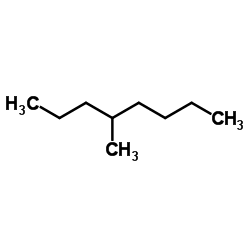
4-Methyloctane structure
|
Common Name | 4-Methyloctane | ||
|---|---|---|---|---|
| CAS Number | 2216-34-4 | Molecular Weight | 128.255 | |
| Density | 0.7±0.1 g/cm3 | Boiling Point | 141.6±7.0 °C at 760 mmHg | |
| Molecular Formula | C9H20 | Melting Point | N/A | |
| MSDS | N/A | Flash Point | 24.2±11.4 °C | |
| Name | 4-methyloctane |
|---|---|
| Synonym | More Synonyms |
| Density | 0.7±0.1 g/cm3 |
|---|---|
| Boiling Point | 141.6±7.0 °C at 760 mmHg |
| Molecular Formula | C9H20 |
| Molecular Weight | 128.255 |
| Flash Point | 24.2±11.4 °C |
| Exact Mass | 128.156494 |
| LogP | 5.35 |
| Vapour Pressure | 7.3±0.1 mmHg at 25°C |
| Index of Refraction | 1.407 |
|
Section I.Chemical Product and Company Identification Chemical Name 4-Methyloctane Portland OR SynonymNot available. Chemical FormulaCH3(CH2)3CH(CH3)(CH2)2CH3 CAS Number2216-34-4 Section II.Composition and Information on Ingredients Chemical NameCAS Number Percent (%)TLV/PELToxicology Data 4-Methyloctane2216-34-4Min. 99.0 Not available.Not available. (GC) Section III. Hazards Identification Acute Health EffectsNo specific information is available in our data base regarding the toxic effects of this material for humans. However, exposure to any chemical should be kept to a minimum. Skin and eye contact may result in irritation. May be harmful if inhaled or ingested. Always follow safe industrial hygiene practices and wear proper protective equipment when handling this compound. Follow safe industrial hygiene practices and always wear proper protective equipment when handling this compound. Chronic Health EffectsCARCINOGENIC EFFECTS : Not available. MUTAGENIC EFFECTS : Not available. TERATOGENIC EFFECTS : Not available. DEVELOPMENTAL TOXICITY: Not available. Repeated or prolonged exposure to this compound is not known to aggravate existing medical conditions. Section IV.First Aid Measures Eye ContactCheck for and remove any contact lenses. In case of contact, immediately flush eyes with plenty of water for at least 15 minutes. Get medical attention. Skin ContactIn case of contact, immediately flush skin with plenty of water. Remove contaminated clothing and shoes. Wash clothing before reuse. Thoroughly clean shoes before reuse. Get medical attention. InhalationIf the victim is not breathing, perform mouth-to-mouth resuscitation. Loosen tight clothing such as a collar, tie, belt or waistband. If breathing is difficult, oxygen can be administered. Seek medical attention if respiration problems do not improve. IngestionINDUCE VOMITING by sticking finger in throat. Lower the head so that the vomit will not reenter the mouth and throat. Loosen tight clothing such as a collar, tie, belt or waistband. If the victim is not breathing, perform mouth-to-mouth resuscitation. Examine the lips and mouth to ascertain whether the tissues are damaged, a possible indication that the toxic material was ingested; the absence of such signs, however, is not conclusive. Section V. Fire and Explosion Data Not available. FlammabilityFlammable.Auto-Ignition Flash PointsFlammable LimitsNot available. 20°C (68°F). Combustion Products These products are toxic carbon oxides (CO, CO 2). Fire Hazards Not available. Explosion HazardsRisks of explosion of the product in presence of mechanical impact: Not available. Risks of explosion of the product in presence of static discharge: Not available. Fire Fighting Media Flammable liquid. SMALL FIRE: Use DRY chemical powder. and Instructions LARGE FIRE: Use alcohol foam, water spray or fog. Consult with local fire authorities before attempting large scale fire-fighting operations. Continued on Next Page Chemical Produ Section VI.Accidental Release Measures Spill CleanupFlammable liquid. InstructionsKeep away from heat. Mechanical exhaust required. Stop leak if without risk. Absorb with DRY earth, sand or other non-combustible material. DO NOT touch spilled material. Prevent entry into sewers, basements or confined areas; dike if needed. Consult federal, state, and/or local authorities for assistance on disposal. Section VII. Handling and Storage Handling and StorageFLAMMABLE. Keep away from heat. Mechanical exhaust required. Avoid excessive heat and light. Do not breathe gas/fumes/ vapor/spray. Information Always store away from incompatible compounds such as oxidizing agents. Section VIII. Exposure Controls/Personal Protection Engineering ControlsProvide exhaust ventilation or other engineering controls to keep the airborne concentrations of vapors below their respective threshold limit value. Ensure that eyewash station and safety shower is proximal to the work-station location. Personal ProtectionSplash goggles. Lab coat. Vapor respirator. Boots. Gloves. Suggested protective clothing might not be sufficient; consult a specialist BEFORE handling this product. Be sure to use a MSHA/NIOSH approved respirator or equivalent. Exposure LimitsNot available. Section IX. Physical and Chemical Properties Solubility Physical state @ 20°CLiquid. (Colorless, clear.)Not available. 0.72 (water=1) Specific Gravity Molecular Weight128.26Partition CoefficientNot available. Boiling Point142°C (287.6°F)Vapor PressureNot available. Melting PointNot available.Vapor Density0.719 (Air = 1) 1.405VolatilityNot available. Refractive Index Critical TemperatureNot available.OdorNot available. ViscosityNot available.TasteNot available. Section X.Stability and Reactivity Data Stability This material is stable if stored under proper conditions. (See Section VII for instructions) Conditions of InstabilityAvoid excessive heat and light. Incompatibilities Reactive with oxidizing agents. Section XI. Toxicological Information RTECS NumberNot available. Eye Contact. Ingestion. Inhalation. Routes of Exposure Toxicity DataNot available. Chronic Toxic EffectsCARCINOGENIC EFFECTS : Not available. MUTAGENIC EFFECTS : Not available. TERATOGENIC EFFECTS : Not available. DEVELOPMENTAL TOXICITY: Not available. Repeated or prolonged exposure to this compound is not known to aggravate existing medical conditions. Acute Toxic EffectsNo specific information is available in our data base regarding the toxic effects of this material for humans. However, exposure to any chemical should be kept to a minimum. Skin and eye contact may result in irritation. May be harmful if inhaled or ingested. Always follow safe industrial hygiene practices and wear proper protective equipment when handling this compound. Follow safe industrial hygiene practices and always wear proper protective equipment when handling this compound. Continued on Next Page 4-Methyloctane Section XII.Ecological Information EcotoxicityNot available. Environmental FateNot available. Section XIII. Disposal Considerations Recycle to process, if possible. Consult your local regional authorities. You may be able to dissolve or mix material with a Waste Disposal combustible solvent and burn in a chemical incinerator equipped with an afterburner and scrubber system. Observe all federal, state and local regulations when disposing of the substance. Section XIV. Transport Information DOT ClassificationCLASS 3: Flammable liquid. PIN Number Proper Shipping Name Hydrocarbons, liquid, n.o.s. Packing Group (PG)II DOT Pictograms Section XV. Other Regulatory Information and Pictograms TSCA Chemical InventoryThis product is NOT on the EPA Toxic Substances Control Act (TSCA) inventory. The following notices are required by 40 CFR 720.36 (C) for those products not on the inventory list: (EPA) (i) These products are supplied solely for use in research and development by or under the supervision of a technically qualified individual as defined in 40 CFR 720.0 et sec. (ii) The health risks of these products have not been fully determined. Any information that is or becomes available will be supplied on an MSDS sheet. WHMIS ClassificationCLASS B-2: Flammable liquid with a flash point lower than 37.8°C (100°F). (Canada) EINECS Number (EEC) 218-687-2 EEC Risk StatementsR11- Highly flammable. R18- In use, may form flammable/explosive vapor-air mixture. SECTION 16 - ADDITIONAL INFORMATION N/A |
| Precursor 9 | |
|---|---|
| DownStream 2 | |
| Octane, 4-methyl- |
| 4-methyl-octane |
| 5-methyloctane |
| inaktives 4-Methyl-octan |
| Octane,4-methyl |
| EINECS 218-687-2 |
| α-3,4-dimethylheptane |
 CAS#:637-97-8
CAS#:637-97-8 CAS#:187737-37-7
CAS#:187737-37-7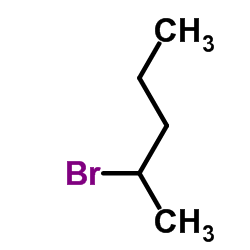 CAS#:107-81-3
CAS#:107-81-3 CAS#:109-72-8
CAS#:109-72-8 CAS#:625-29-6
CAS#:625-29-6 CAS#:30479-99-3
CAS#:30479-99-3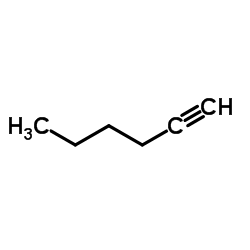 CAS#:693-02-7
CAS#:693-02-7 CAS#:23418-37-3
CAS#:23418-37-3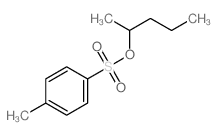 CAS#:3813-69-2
CAS#:3813-69-2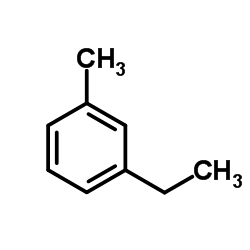 CAS#:620-14-4
CAS#:620-14-4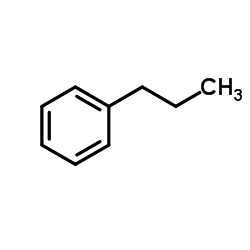 CAS#:103-65-1
CAS#:103-65-1